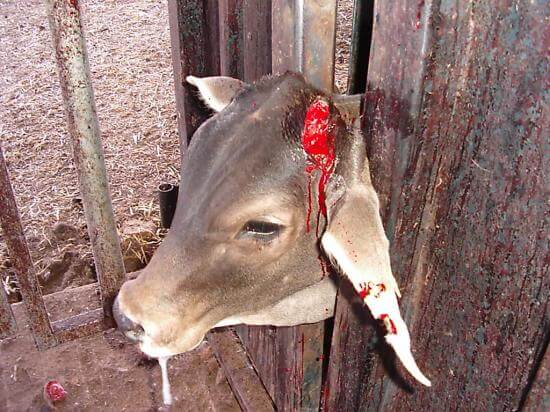

Horns in cattle have no place in modern, intensively managed beef production, but problems associated with injury and bruising can be avoided by removing them.
Beef cattle in horned herds have twice as many bruises as those in hornless herds. In fact, the presence of a few horned animals in a herd significantly increases the incidence of bruising. One study found discountable bruises in 10,5% of feedlot cattle, of which between 25% and 50% had horns. It was noted that eliminating horns could decrease this figure to between 2% and 5%.
Some cattlemen believe that horned cattle are genetically superior to polled cattle. Allaying perceptions of some cattlemen, research has demonstrated that horned and polled cattle are similar for traits associated with reproduction, growth and behaviour. There are thus enormous benefits in a horn-free beef cattle herd, especially in reducing the incidence of bruising and injury.
Long-term hornlessness can be achieved by breeding polled cattle. In the meanwhile, dehorning is a solution.
Dehorning entails removing the horn by removing or destroying the keratin-producing cells and structures at the base of the horn. Tipping entails the removal of the insensitive part of the horn. Contrary to popular belief, tipping does not reduce the incidence of bruising. In any case, it is painful to steers and reduces weight gain. If done at all, it should be done at an early age.
When to dehorn
Calves should be dehorned before the age of three months, earlier if possible. The younger the calves, the more easily they can be handled and the less stress they suffer. The procedure, if properly carried out, causes no or little bleeding and the wounds heal quickly. The older the calves, the greater the stress and potential for problems such as developing infections, and occasionally dying of blood loss. In addition, calves dehorned after two months may require two weeks to return to their pre-dehorning weight.
A short calving season allows calves to be dehorned at approximately the same age. If calving is spread out over a long period, groups of similar age must be selected for dehorning.
Calves should be dehorned on dry, cool days to dry the wound quickly with the minimum risk of infection. The best time is late afternoon, when fly activity is usually low. Never dehorn in wet weather, as this delays healing and increases the risk of infection.
A well-designed calf cradle will restrain the calf, minimising stress and effort for both the operator and the calf. Dehorning must be done last , after vaccination, marking and castration.
The specific procedure depends on the age of the calf. Disbudding, or destruction of the horn bud, is preferred for calves younger than 10 weeks. This entails applying a hot iron cautery or caustic paste to the horn bud. Dehorning or horn amputation by means of a scoop, saw, shears or wire, is suitable for older calves. Because tissue is damaged, all methods of disbudding and dehorning are probably painful.
 Contact Jaguza Support
Contact Jaguza Support